10 Strongest Women in the World: From the Origin Till Now
Author:
Reviewed by:
(21 years of Oly Lifting experience)
Unlock your full potential by engaging with our experts and community! Have questions about your fitness journey or looking for expert advice on weightlifting techniques? Don’t hesitate — leave a comment below and Sergiy Osipchyk will provide a personalized answer and insights to help you reach your goals.
Torokhtiy is reader-supported. Some links are affiliate links, and we may earn a commission at no extra cost to you. See our disclosure page for details.
Today, women are taking up weightlifting, powerlifting, and bodybuilding, participating in the same competitions as men do. The notion of a strong woman is becoming more spread in sports circles.
But they’re becoming less feminine because they don’t fit society’s expectations. Despite this, women still are breaking free of gender stigma and expressing passion for their sports hobby.
The current role of women in weightlifting serves as an inspiration for other women, encouraging them to express their power, break stereotypes, and redefine the value of strong women in strength sports.
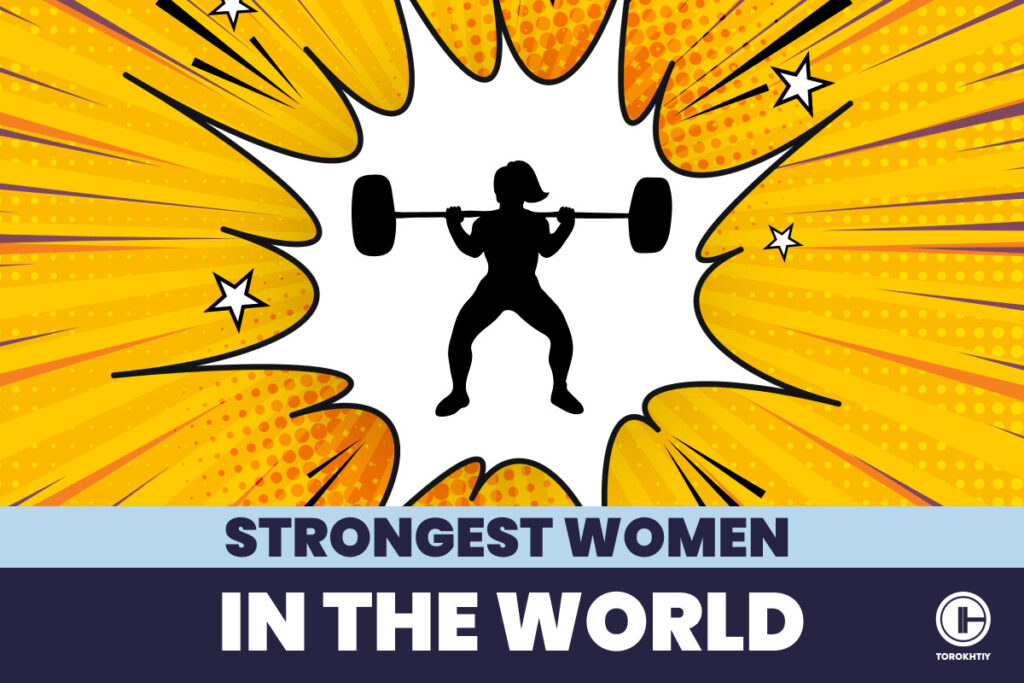
Strongest Women in the World: Its Concept and Progression
When it comes to strength training and lifting weights in particular, there is a belief in society that it’s usually men’s business to lift and pull heavy weights.
Only men can be obsessed with being ripped and muscular, while women should express pure femininity and cuteness. However, nowadays there’s a tendency that some women can outshine men making them feel weak.
You may like it: Effective Strongman Training Program To Gain Max Strength
World’s Strongest Woman, also known as Strongwoman World Championships is an annual strongwoman competition, which is considered to be a capstone for female competitors and recognized as the world championship like the World’s Strongest Man.
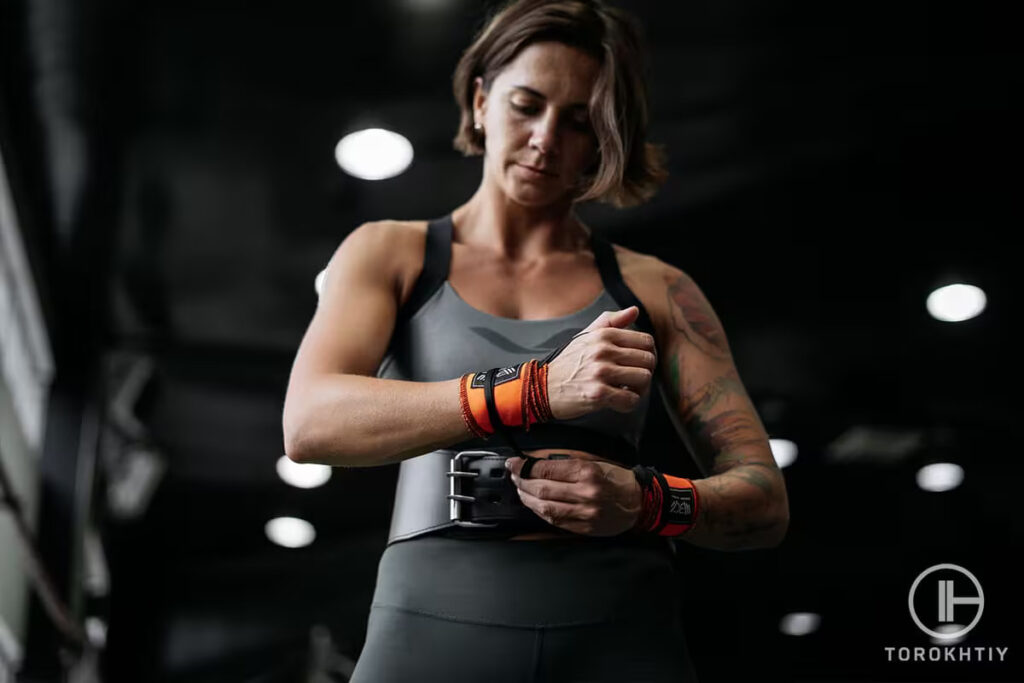
1. Peculiarities of Women’s Strength Training in the 20th Century
In the world of sports dominated by men, women were expressing resilience and determination to take up weight training equally to men despite shattered stereotypes in the society.
At the beginning of the 20th century, there was an emergency of physical culture spread, i.e. highlighting the importance of training for overall well-being. However, societal norms and standards limit women from being involved in sports.
Despite these restrictions, there were several brave women who began to challenge these conventions. After World War II, women contributed greatly to the war expressing their high interest in weight training.
Such popularity of sports resulted in a fitness revolution in the 1970s. There were lots of pioneering fitness enthusiasts among females like Rachel McLish and Cory Everson who became influential figures in the 1970s and 1980s. McLish, crowned the first Ms.
Olympia in 1980, showed a lean physique, standing against societal norms about the feminine ideal. These women paved the way for a new epoch in which women’s strength and athleticism were welcomed.
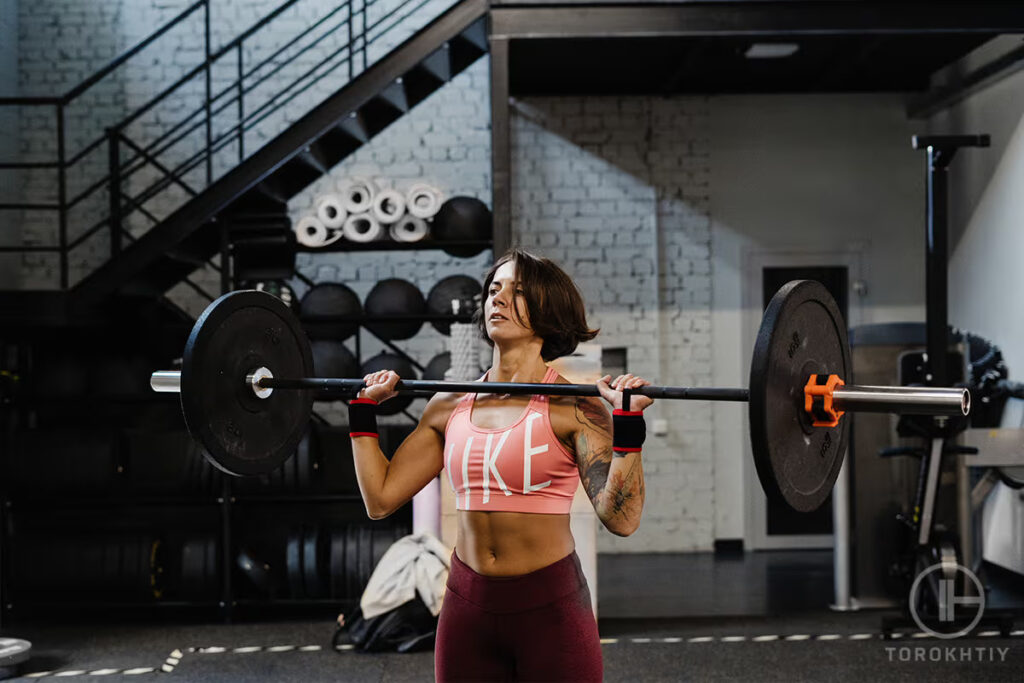
The American Abbye ‘Pudgy’ Stockton was a pioneer in women’s weightlifting, known also as “The Queen of Muscle Beach.” She wrote a monthly column for Strength and Health called “Barbelles” back in 1944, giving advice and encouragement to women who wanted to take up weight training.
At that time there was a common belief that lifting weights would make women muscular and less feminine, she kept on inspiring women to be fit despite the thoughts spread around.
The late 20th and the early 21st century demonstrated a significant shift in the perception of women in strength sports, particularly in weightlifting and powerlifting. The sports industry became more open and inclusive, emphasizing individual enhancement rather than sticking to societal standards.
2. Women’s Strength Training Today: Broadening Female Inclusion in Weightlifting
Female bodybuilding is one of the toughest sports, at the same time, it’s gaining popularity over the last decades. Any strength- and weight lifting-related discipline requires years of hard, consistent workouts and extreme diet regime.
Weightlifting and bodybuilding are not just physically demanding, but also such training may result in physical injuries or some serious psychological issues. Many strongest female bodybuilders retired because of stress breakdowns, however, others gained success in the sports after getting 50.
The inclusion of women in the weightlifting sport in the Olympic Games became a pivotal point in recognizing and legitimizing women’s participation in such sport events. Women debuted at the Olympics in 2000, creating a solid platform for representing female weightlifting in the world arena.
Follow us!

Free!
Get a 2-week Weightlifting Program as a bonus for the subscription to kickstart your training plan!

Free!
The History of the Strongest Women in the World Events: The List of Top Athletes
The strongest female athletes in weightlifting and bodybuilding revolutionized the idea about the nature of the female physique and appearance, and its ability to develop muscle and muscularity.
If we analyze the recent Strongwoman competitions, we can confirm that female lifters from Great Britain, the United States, and Ukraine have prevailed at these events over the past years.
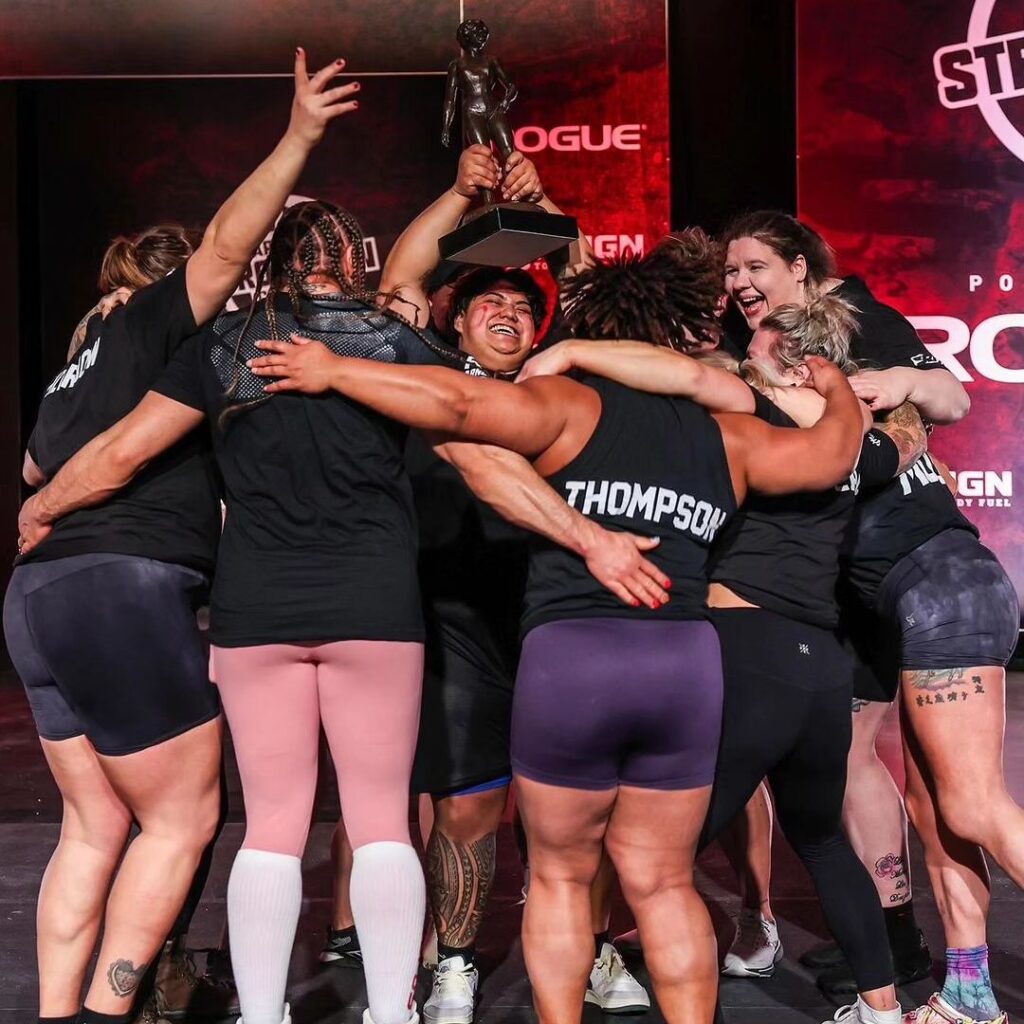
Namely, British Rebecca Roberts who is the current strongest woman in the world, Ukrainian Olga Liashchuk, another British strongwoman Donna Moore, and American Kristin Rhodes are the leading athletes who occupy the top positions.
Here’s the statistics of the recent Strongest Woman events and the list of Top 3 athletes:
2023
- Rebecca Roberts (GBR)
- Lucy Underdown (GBR)
- Nicole Genrich (AUS)
2022
- Olga Liashchuk (UKR)
- Andrea Thompson (GBR)
- Inez Carrasquillo (PR)
2021
- Rebecca Roberts (GBR)
- Olga Liashchuk (UKR)
- Annabelle Chapman (GBR)
2019
- Donna Moore (GBR)
- Lindsey Quinones (USA)
- Andrea Thompson (GBR)
2018
- Andrea Thompson (GBR)
- Donna Moore (GBR)
- Kristin Rhodes (USA)
2017
- Donna Moore (GBR)
- Kristin Rhodes (USA)
- Britteny Cornelius (USA)
2016
- Donna Moore (GBR)
- Lidia Gynko (UKR)
- Olga Liashchuk (UKR)
Let’s recall the Top 10 strongest female athletes in the world, mentioning their achievements and records
1. Rebecca Swanson
Rebecca ‘Becca’ Swanson is an American strongest female powerlifter, strongwoman, and a professional wrestler in the past. She set numerous powerlifting world records, including records of the heaviest squat, bench press, deadlift, and total. From 1996 until 2008 she took gold medals at the powerlifting events.
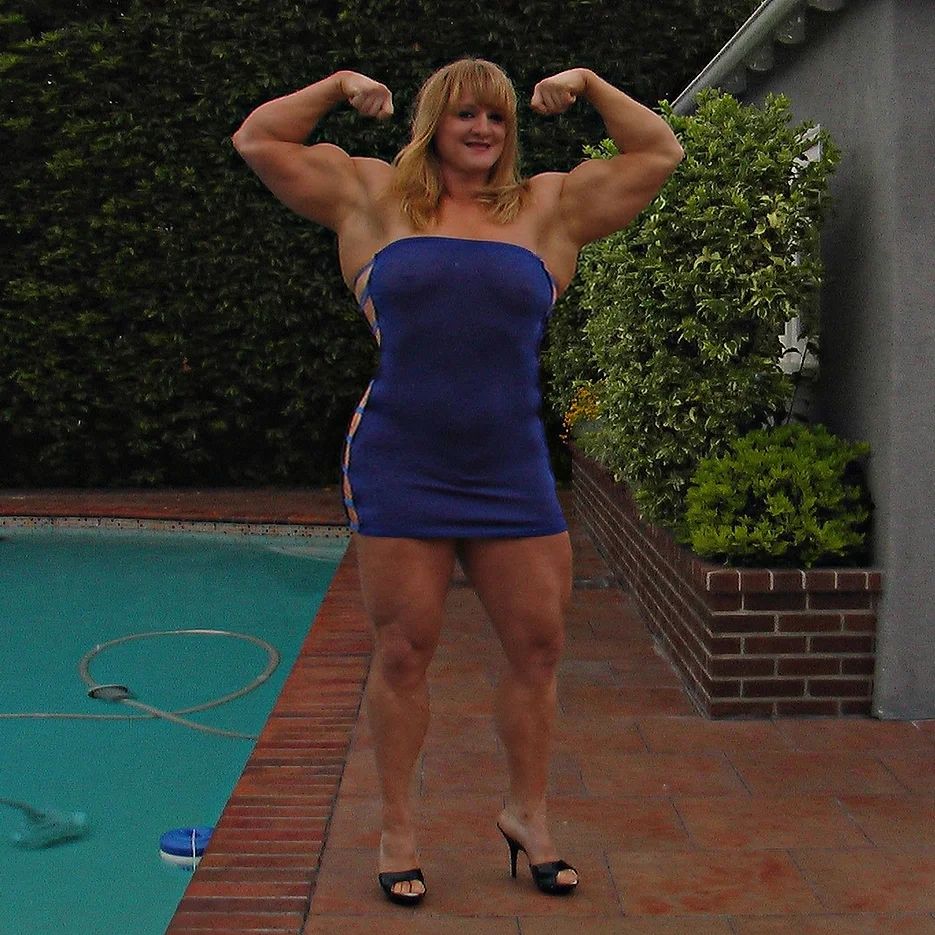
Let’s rename her major lifts: the squat is 601.9 lb (273.0 kg) (equipped), the bench press is 523.6 lb (237.5 kg) (equipped with a bench shirt). Becca is the only woman who deadlifted 621 lb (282 kg) (equipped). Swanson is also known for performing 35 kg dumbbell curls for 10 repetitions.
2. Jill Mills
Jill Mills is an American world champion in powerlifting and world champion strongwoman. She’s a two-time gold medalist at the World’s Strongest Women in 2001 and 2002, and also got bronze at the same event in 2005. At the powerlifting competitions, she also became the leader, winning the gold medal.
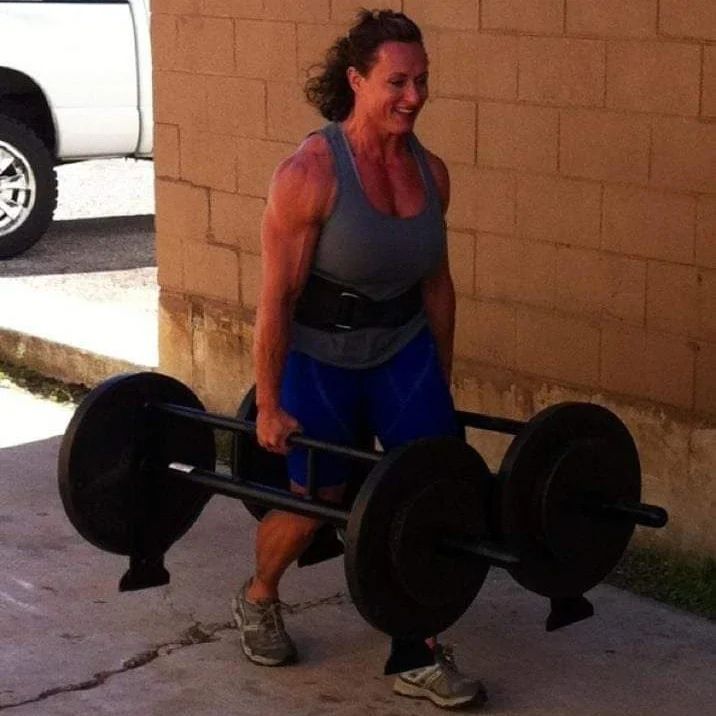
In 2001 the International Federation of Strength Athletes crowned Mills as the first World’s Strongest Woman champion in Zambia, setting the way for generations of future strongwomen.
3. Kristin Rhodes
She’s the eight-time America’s Strongest Woman and three-time World’s Strongest Woman. She began competing in Strongwoman competitions in 2006 after her husband, Donnie, was encouraged to compete at a local contest.

By the way, at that time, there were few women competing at such events. So, she competed in the men’s categories and managed to win.
4. Rebecca Roberts
She’s currently the UK’s Strongest Woman alive in 2023 and the winner of the 2021 and 2023 World’s Strongest Woman competition. She regained the title of ‘World’s Strongest Woman’ after winning at the Official Strongman Games, becoming one of 4 women in the whole history who became a multiple World Strongest Woman champion.
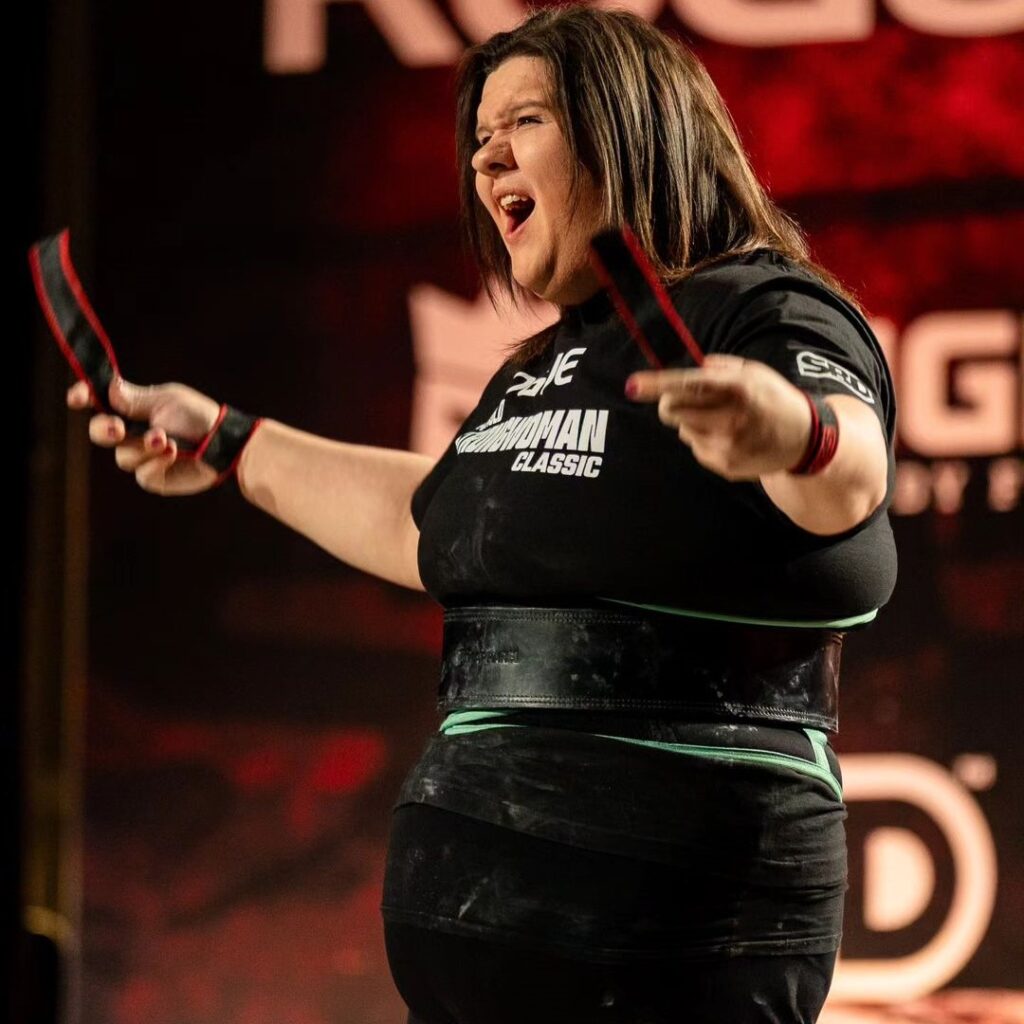
Here’s the list of the world records she currently holds:
- 2023 – Conan’s Wheel of Pain at Arnold Classic resulting in 92’9″
- 2018 – Handshake Lift (one hand) at David Horne World of Grip resulting in 84.68 kg
- 2018 – Axle Deadlift (20″ from the floor) double overhand thumbless grip at David Horne World of Grip resulting in 137.05 kg
- 2018 – 76mm Silarukov Rolling Handle (thumbless) hold (one hand) at David Horne World of Grip resulting in 47.5 kg
5. Rhianon Lovelace
This charismatic and bright, strong woman is considered to be the strongest woman in history. She is a two-time World’s Strongest Woman winner and multiple strongwoman world record holder. Namely, she won two World titles, three European and three British championships.
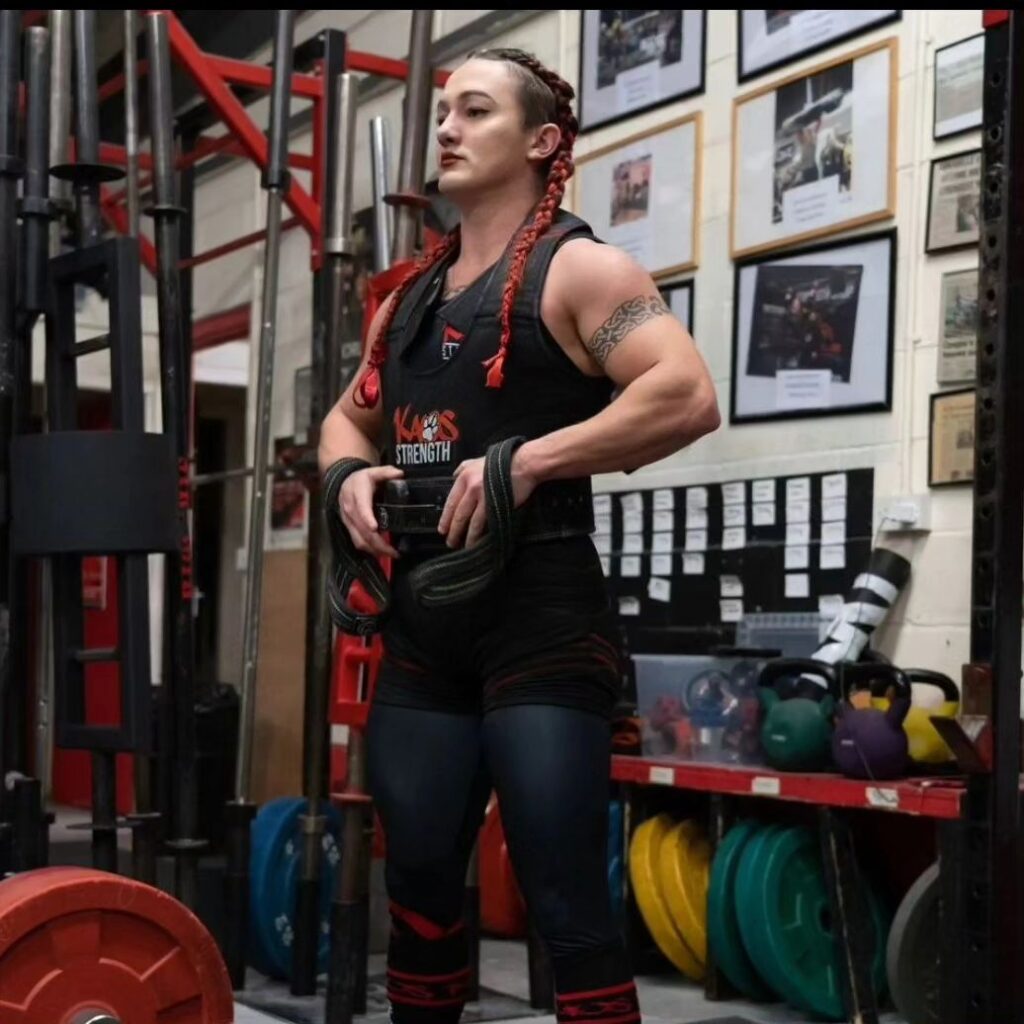
She has established fourteen World Records in the following events: Atlas Stone, Axle Press, Deadlift, Silver Dollar Deadlift, and the heaviest Axle Deadlift ever performed in any weight division. For instance, her Deadlift world record is 282.5kg (623lb) that is a three-weight division record, with only the heavyweight women exceeding her effort.
Her major competition results are the following:
- U64kg World’s Strongest Woman:
- 2018 & 2022 – Winner
- 2021 – Runner-up
- Strongman European Championships 2023: Winner
- Arnold UK Pro 2022: Winner
- Europe’s Strongest Woman: 3 x Winner
- Britain’s Strongest Woman: 3 x Winner
Best Lifts:
- Deadlift: 282.5kg/623lb
- Axle Deadlift of 261.5kg/577lb (World Record across all weight categories)
- Strict Press: 90kg/198lb
- Bench Press: 115kg/254lb
- Raw Deadlift: 241kg/531lb
6. Zhou Lulu
She is a strong weightlifter from China, known for her world records in the super heavyweight category. She won gold at the 2012 Summer Olympic Games in London in the women’s +75 kg category with a total of 333 kg, which became a new world record. However, those records have since been broken.
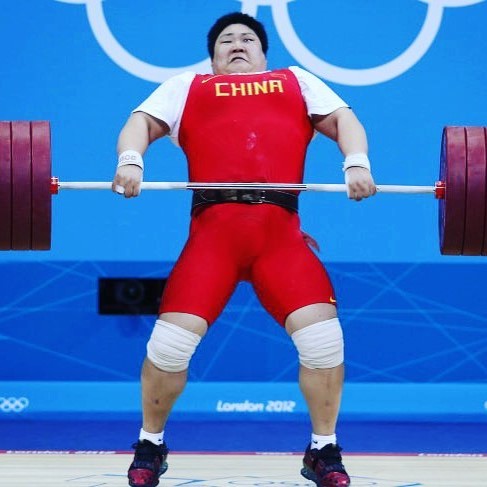
Li Wenwen (5’10” 331 pounds) won the super-heavy gold medal at the 2020 Olympics and currently holds the weightlifting world records for a woman of any weight in the snatch, clean and jerk, and total.
7. Irene Andersen
Being in her 50s, Irene is one of the best strongest women ever in bodybuilding competing for Jake Wood and Wings of Strength. She started working out when she was 15: Irene was a serious athlete starting with martial arts, e.g. judo and kickboxing.
Several years later, she started weight training – she liked it and her body responded quickly to such tension.
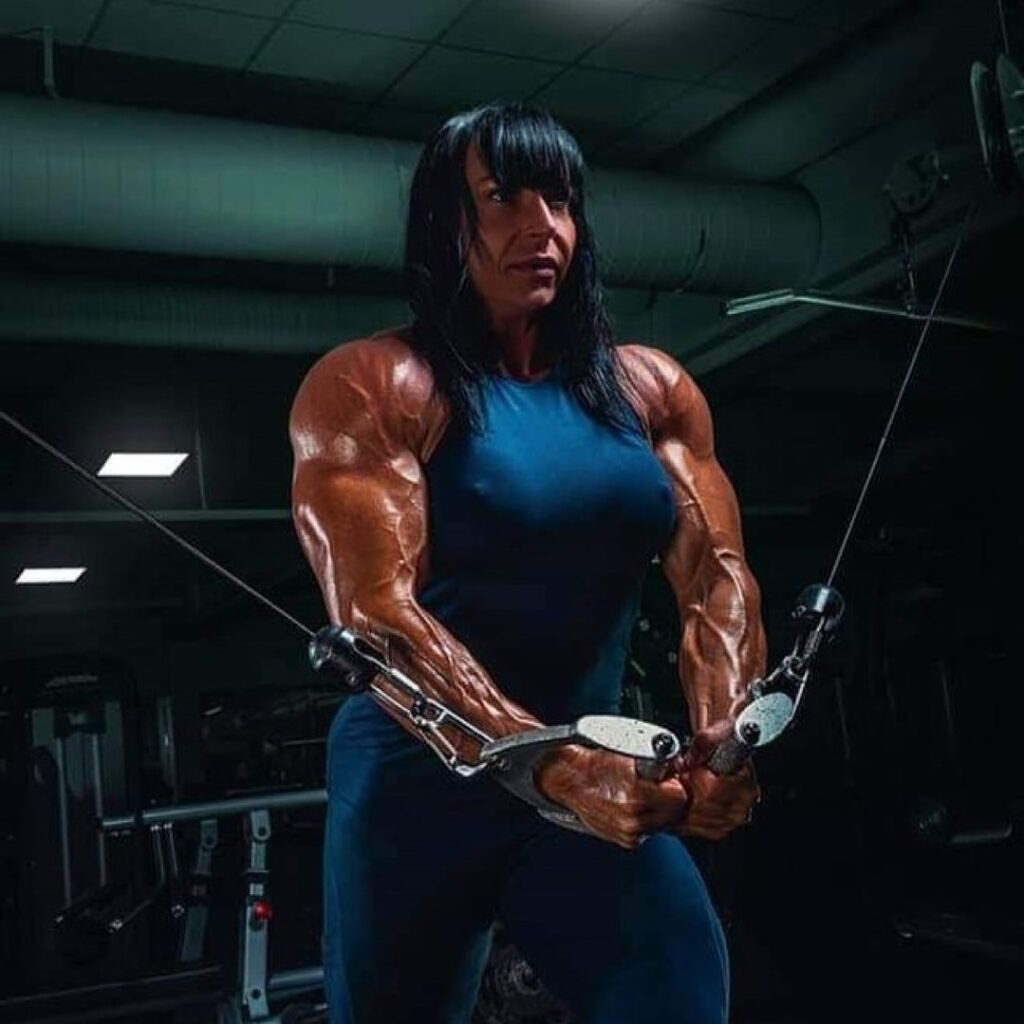
Irene got interested in bodybuilding in 2003. She says that she benefits from both muscle memory and muscle maturity. So, she’s training consistently, resulting in a ripped body, so it responds to this degree of development to be ‘normal.
8. Donna Moore
Trying to cope with health issues and depression, Donna Moore took up weight training and shortly after joining the local gym, she competed at the strongwoman event. Thus, this is how the story of the three-time Strongest Woman in the world began.
She’s a British strongwoman and the gold medal winner of the 2016, 2017, and 2019 World’s Strongest Woman competitions, also a two-time Arnold World Strongwoman champion in 2016 and 2017, and the 2018 Arnold Pro Strongwoman champion.
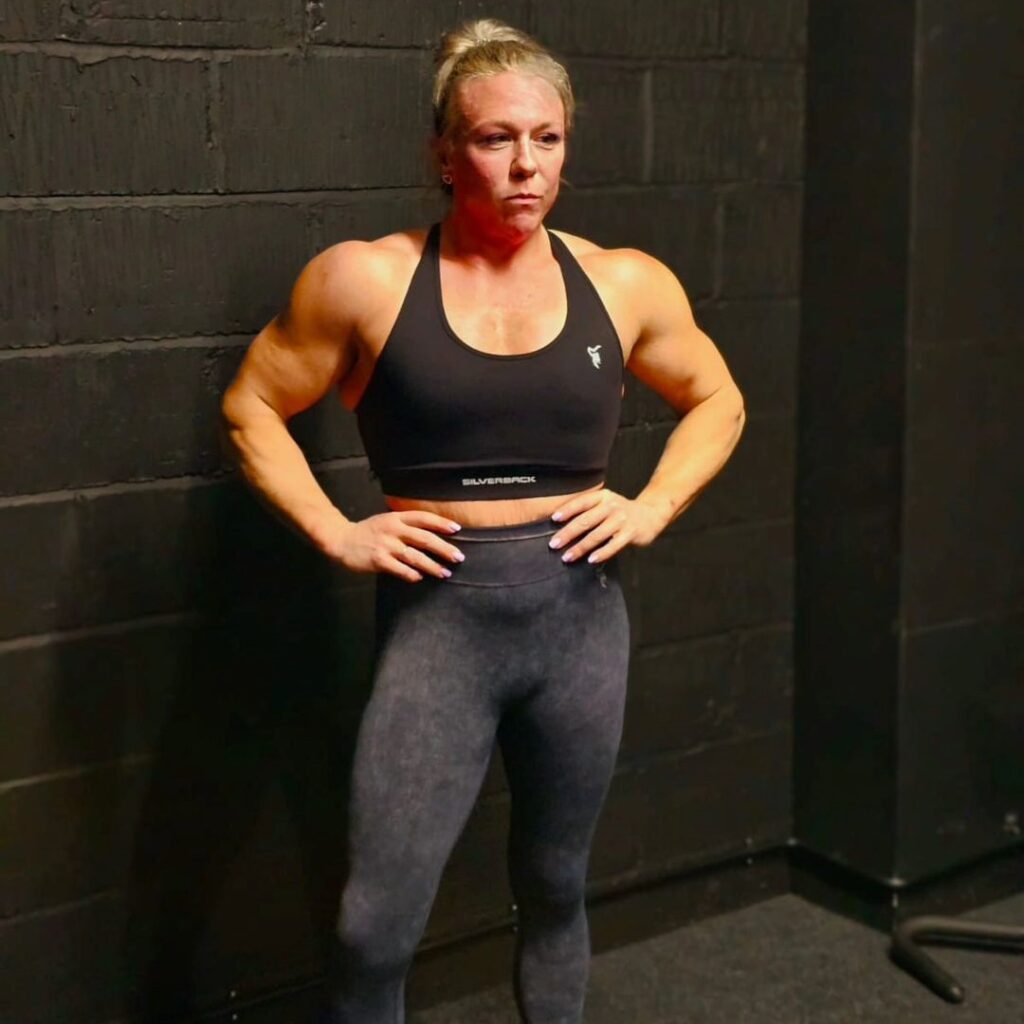
She set records in the following events: 170 kg at Max Atlas Stone (2020 Rogue Record Breakers); 147 kg at Max Atlas Stone (No Tacky) in 2018, and 7 of the 9 Ardblair Stones loading at 37.14 seconds (2019 Highland Games & Rattray Highland Games).
9. Andrea Thompson
She began competing in strongwomen events in 2013 becoming one of the world’s most successful strongwomen. During her strength career she won the World’s Strongest Woman title, four Britain’s Strongest Woman awards, and also broke numerous world records in various disciplines.
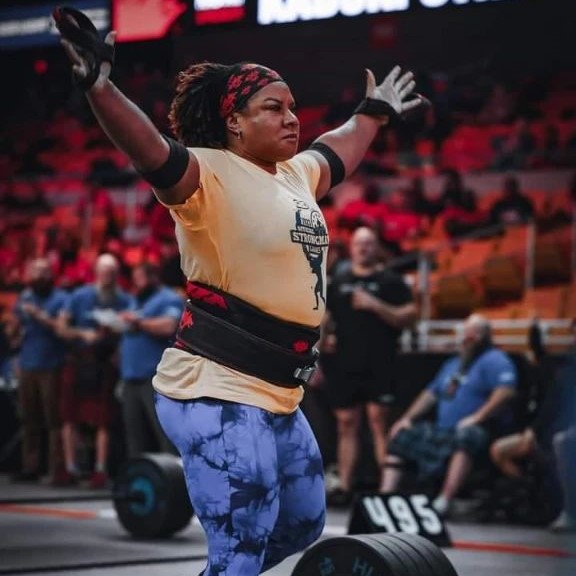
She started from Functional Fitness classes, but soon she developed a talent for weight lifting and soon moved to strongwoman competitions.
Andrea is the world record holder for the log lift event of 140kg/308 lb in 2022. She has also set world records in the Elephant Bar and Hummer deadlift, and the regular strongwoman deadlift.
10. Olga Liashchuk
She’s a Ukrainian pro Strongwoman who is a two-time Arnold Strongwoman Classic champion and also the winner of World’s Strongest Woman, Strongest Woman in the World, and Shaw Classic Open (Women) competitions.

Her personal records include:
- Rogue Elephant Bar Deadlift – 288.5 kg (636 lb) raw with straps at the 2023 Arnold Strongwoman Classic;
- Hummer tire Deadlift – 306 kg (675 lb) 15″ from the floor at the 2022 Arnold Pro Strongwoman;
- Axle Deadlift (for reps) – 218 kg (481 lb) for 10 reps at the 2022 World’s Strongest Woman;
- Deadlift (for reps) – 170 kg (375 lb) for 15 reps at the 2019 Arnold Pro Strongwoman
- Jeck Stone carry – 2 Stones weighing 99.5 kg (219 lb) & 93.6 kg (206 lb) for 13.31 meters (43’8″) at the 2024 Arnold Strongwoman Classic
- Thor’s Hammer one arm grip lift – 68 kg (150 lb) at the 2024 Rogue Record Breakers;
- Conan’s Wheel of Pain – 9,072 kg (20,000 lb) 18.19 meters (59’8″) at the 2023 Arnold Strongwoman Classic.
Common Misconceptions About Women’s Involvement in Strength Training
There’s a belief that lifting weights and everything related to this topic isn’t useful for women, namely it may be dangerous for their health and will make them bulky. Such stereotypes are still present in society, however, we’ll try to clear up these points and provide you with trusted evidence.
1. Women Will Become Too Bulky
The first common myth refers to the fact that lifting weights can make women become too muscular and bulky. Yes, this is the fact that if you lift weights regularly over a long time, you will gain muscle mass.
However, some studies show that there is no significant difference between how quickly men and women build muscles following a similar workout regime.
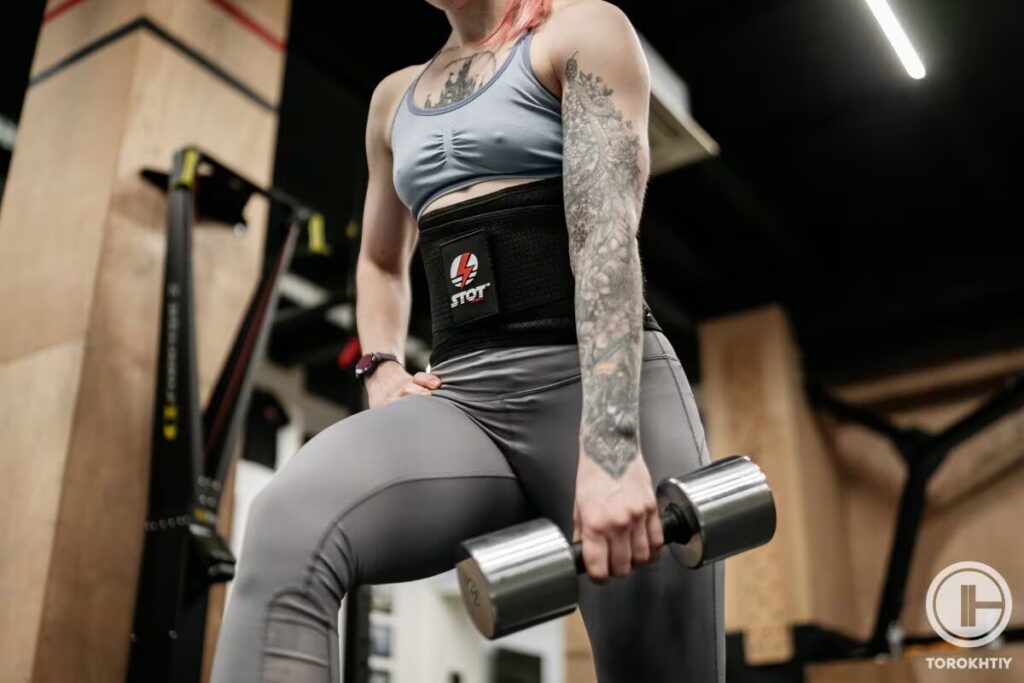
To start with, building muscles may be a longer process than burning fat. A muscular lean body is the result of many years of hard work. Thus, it’s impossible for women to become bulky in a short time. Even if gaining muscle mass, it won’t be noticeable, the maximum possible result is becoming fit and sporty.
Another proof that a woman won’t become bulky is that it’s 10 times harder for females to build muscle mass than men. The reason is that women have 10 times less testosterone than men, which is responsible for muscle growth.
2. Strength & Lifting Training Is Only for Men
As we can see, despite all stereotypes, there are tens of sample female athletes who got the title of the strongest women in the world. Like men, they can excel at lifting weights. As usual, men lift more weight in total, but some women can lift even more pounds when it comes to overall strength and endurance.
Strength training is for everyone, it’s not a matter of gender. However, traditional gender roles and differences in absolute strength have resulted in misconceived slant of female strength training. Male physiology, even more than male hormones, is the key reason for men’s superiority.
But when comparing cross-sectional muscle areas, male and female strength remains the same. This is due to regular training that results in bone and soft-tissue modeling, increased lean body mass, decreased fat rate, and facilitating self-confidence.
3. Strength Training Is Dangerous for Women
On the contrary, weight training can be beneficial for older women: the thing is that after 30s, women tend to lose minerals from their bones which may result in osteoporosis, meaning bones that are prone to fracture.
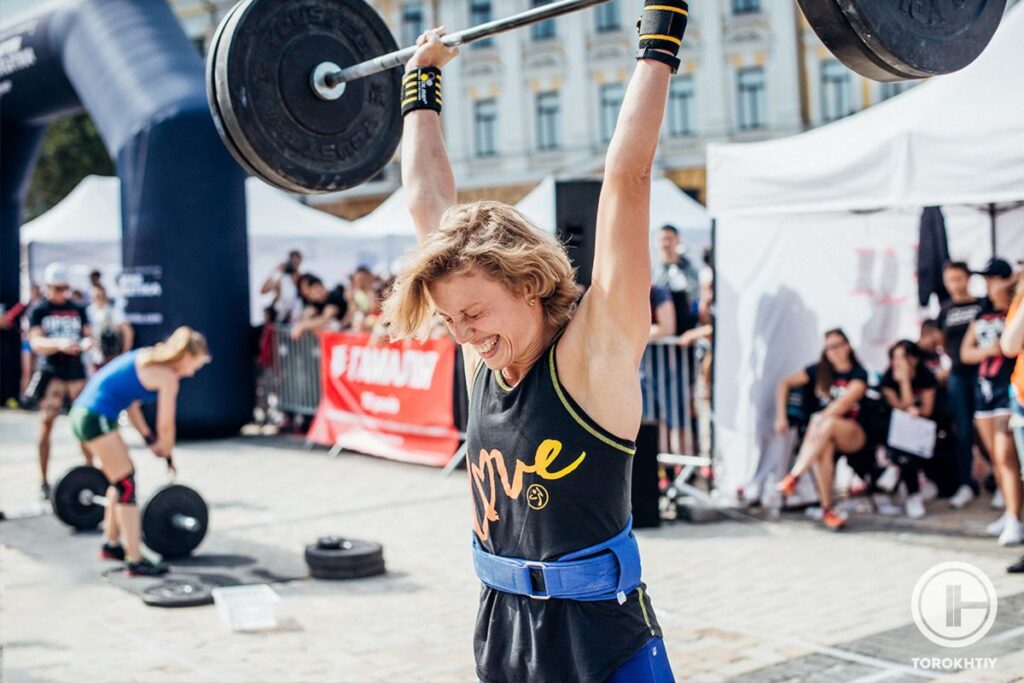
Thus lifting weights is a must in this situation: they get the needed stimulation while training by slowing down the rate of mineral loss.
What’s more, weight training for women mitigates the risk of developing type 2 diabetes and cardiovascular disease. Women suffering from low libido (that is the result of anti-anxiety medication) should try lifting weights.
Conclusion
Leaving all misconceptions behind, female athletes showed their passion in lifting weights, thus becoming the strongest women in the world. They created communities to celebrate diversity inside weightlifting and powerlifting.
Interested in the strongest women records and ongoing leaders? Write us below, we’ll give you an expert-level opinion.
Also Read:
- Strong Woman Competitions: History & Current State
- Strongman vs Bodybuilding: Which Path to Choose?
- Effective Strongman Training Program to Gain Max Strength
- Why Are Strongman Fat: Organism Adaptations, Proper Diet & Training
- How To Become A Strongman: Requirements & Training Plan
- Strongman vs Powerlifting: Key Differences Explained
- 12 Strongman Exercises to Build Strength (+Workout Example)
References:
- W P Ebben, R L Jensen. “Strength training for women: debunking myths that block opportunity”, The Physician and sportsmedicine, no. 26(5) (1998): 86-97.
- Anil Kumar Chaudhary, B. Van Horn, Marilyn Corbin. “StrongWomen® Program Evaluation: Effect of Strength Training Exercises on Physical Fitness of Participants”, Journal of Extension, no. 53 (4), (2015).
- Watson S, Weeks B, Weis L. “High-Intensity Resistance and Impact Training Improves Bone Mineral Density and Physical Function in Postmenopausal Women With Osteopenia and Osteoporosis: The LIFTMOR Randomized Controlled Trial”, Journal of bone and mineral research, no. 34(3) (2019): 572.
- Jonathan C Mcleod, Brad S Currier, Caroline V Lowisz. “The influence of resistance exercise training prescription variables on skeletal muscle mass, strength, and physical function in healthy adults: An umbrella review”, Journal of sport and health science, no. 13(1) (2023):47-60.
- Weight-Lifting For Women: Why Women Should Lift, https://blog.nasm.org/weight-lifting-for-women.
- Photos made by Torokhtiy Media Team.
Why Trust Us?
With over 20 years in Olympic weightlifting, strength training, nutrition coaching, and general fitness our team does its best to provide the audience with ultimate support and meet the needs and requirements of advanced athletes and professional lifters, as well as people who strive to open new opportunities and develop their physical capabilities with us.
By trusting the recommendations of our certified experts in coaching, nutrition, and sports training programming, as well as scientific consultants, and physiotherapists, we provide you with thorough, well-considered, and scientifically proven content. All the information given in the articles concerning workout programming, separate exercises, and athletic performance, in general, is based on verified data.
The product testing process is described in more detail here.
Author: Sergiy Osipchyk
Strongman Coach,
Former coach of Oleksiy Novikov and Pavlo Nakonechnyy
Strongman Experience: 10+ years
Sergiy has been involved in strength sports since he was 10 years old, and already started coaching when he was just 15 years old.
He helps clients of any age and experiences achieve results using an individual approach, daily process control, consultation and training knowledge and techniques, total experience is more than 20,000 individual training sessions.
Sergiy has trained a roster of renowned PRO strongman athletes including Oleksii Novikov, Pavlo Nakonechnyy and many other.
Reviewed by: Oleksiy Torokhtiy
Olympic Weightlifting Champion, PhD in Sport Science
Best Results: Snatch – 200 kg,
C&J – 240 kg
Oleksiy Torokhtiy is a professional athlete boasting 20 years of experience in Olympic weightlifting. With multiple European and World titles under his belt, he has showcased his prowess in two Olympic Games (Beijing 2008 and London 2012). Upon concluding his illustrious career, Oleksiy dedicated himself to coaching. By 2022, he had conducted over 200 weightlifting seminars worldwide. He is the visionary behind an international sportswear and accessories brand known for its motto, “Warm Body Cold Mind.” Additionally, he is an esteemed author and the creator of a series of training programs and eBooks.




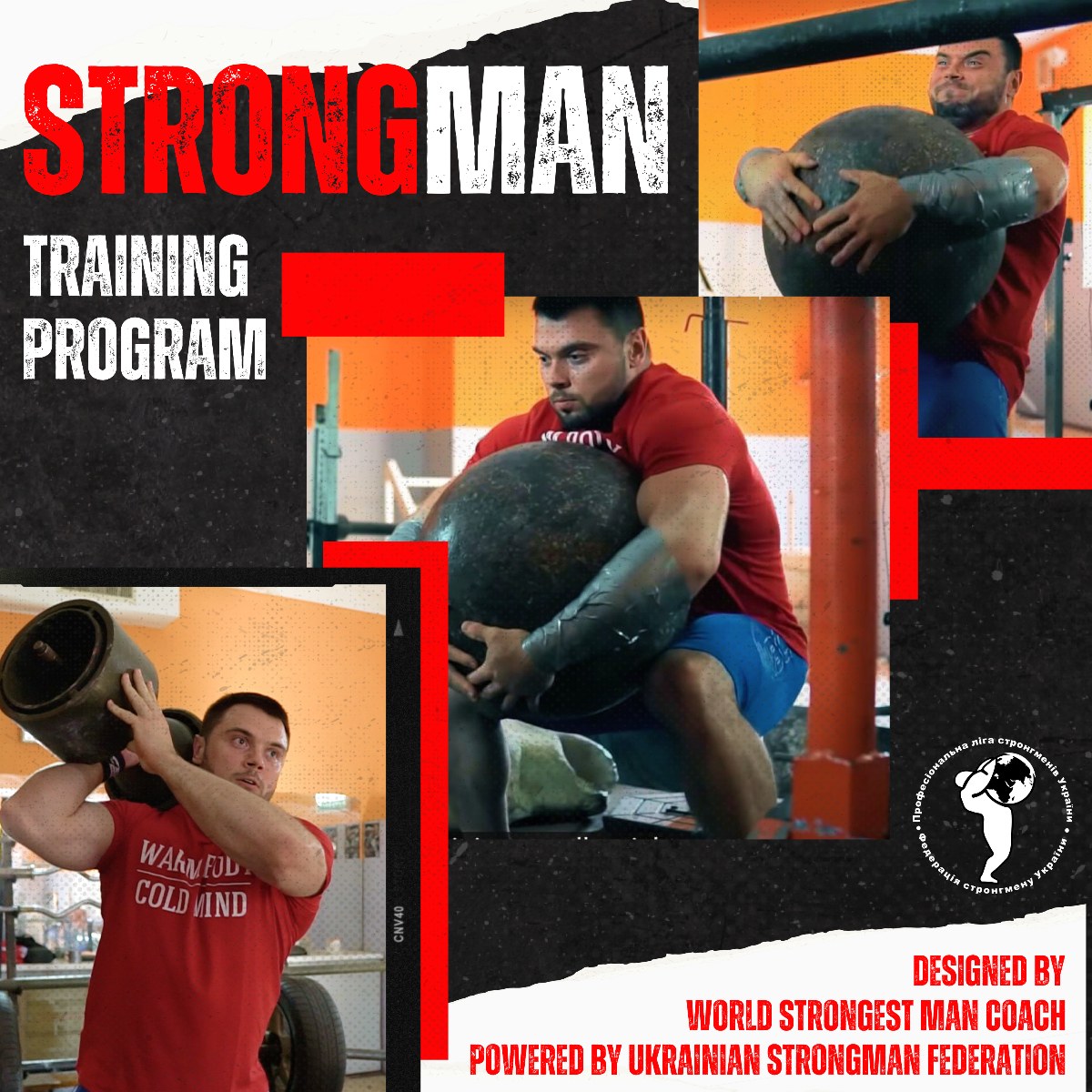
Still have questions after reading our article? Unlock your full potential by engaging with our experts and community! Don’t hesitate — leave a comment below and Sergiy Osipchyk will provide a personalized answer and insights to help you reach your goals.